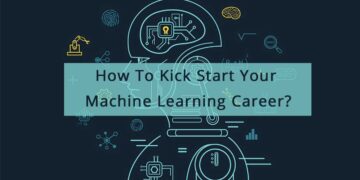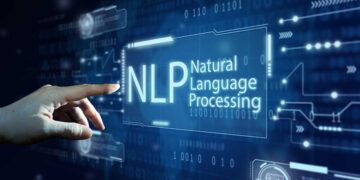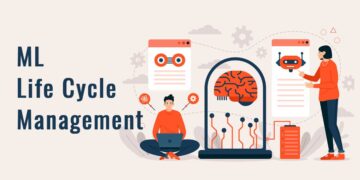Organizations are developing the global culture for data-centric policies in their planning, management, and, more importantly, decision making. It calls for the globally growing need for data scientists for enterprises to work efficiently.
However, all businesses can’t employ data scientists due to the constraints of qualified candidates. Many organizations are trying to cope-up with the few existing data scientists professionals as their new approach to cover the pressing need of data scientists in the field.
Automation
The plethora of work for data scientists includes data management and operational tasks. The operational tasks, for instance, pin down various data sources, merging data sets, and verifying data quality. However, these solely are not the high-value tasks for which data scientists are appointed.
Changing Scenario
The scenario is changing because of the automation efforts of the organizations. According to Ryohei Fujimaki, CEO and founder of dotData (automated machine learning software) statement, model development, and model operationalizations have been made easy by automation.
The creation of modern data science automation plans permits the organizations to utilize and maintain the processes of operations and production through fewer attempts, which in turn helps the enterprises accelerate their investment in artificial intelligence and machine learning, including the data team.
Founder and CTO of AtScale (automated data engineering software company) Matthew Baird, says that the prominent developments in data science automation are in autonomous data engineering, which ultimately handles tasks and automates data management. Later he added, how development is present in the form of just-in-time data engineering.
The automation necessarily acts as the model data engineering team, including comprehending how to go about the best way in underlying data structures within varied databases, their unique network features, along with the data location, policies, and vernacular security processes.
Self-Service Analytics
Modeling automation and data management is not solely required to bring the most of the senior data scientist but to homogenize all the data resources for the citizen data scientists.
Meanwhile, another popular option to deal with the shortage of data scientists is through self-service analytics.
In Baird’s words, the combination of autonomous data engineering development and the increased action of the citizens’ analysts through self-service analytics are freeing useful data science and data engineering resources to provide attention to the other higher-value tasks building the next in machine learning or the artificial models.
Creating Cross-Functional Teams
Simultaneously, the organizations continue to the other endeavors like the limits of self-service analytics tooling and automation. Even the great advances have certain limitations; likewise, every tool easing the work in data science limits the flexibility and alternatives of the users. It hinders the customization for the complex tasks and even makes it impossible, says Chris Nicholson, founder and CEO of Pathmind.
Pathmind is a company for deep learning software. He firmly believes on the ground reality has made many enterprises explore new team strategies, which in turn provide more opportunities to seize out the best from the limited data experts.
Nicholson said, most organizations prefer to anticipate in a similar way to the scarcity of data scientists by exploring the cross-functional data science teams. These companies indulge in work with many business units or by employing external consultants.
What is interesting to know in Nicholson’s statement is that the limitations for the value of data science in a company are not by the lack of data scientists but the data that the company collects and how it makes the individuals use and process through that data.
Tips for Cross-Functional Teams
What can help is cross-functional teams for the organization to get the hold of fragmented data silos. These are because of the technical and internal political barriers, which will be easily changed when the suiting stakeholders are out together for the work process in the same team.
This is the solution to yet another problem which seems like a data scientists shortage but, in reality, provides us the real picture. In other words, data science projects often seem to be unmanageable because of their unclear notions regarding the value of a business.
The principal consultant, Sten Vesterali at More Than Code, an IT consulting firm in Denmark, makes a comment stating too many projects are wild goose chases where you throw a bunch of data to the data scientists and say, let us see what you can make of this.
He adds, nearly 80% of data science projects fail because of a lack of execution. They never make the production code from the lab. For this, the companies require to allocate their data scientists professional the most high-value business goal.
Defining Data Science Roles Better
Amy Hodler explains the main reason and issue in the effective recruitment process of data scientists is that the organizations are trying to make data science as the job title and role and responsibilities far beyond manageable.
The director of graph analytics and AI programs at graph database company Neo4j, Amy Hodler, believes that it is not feasible for the organizations and makes it utterly difficult for the new employees in comprehending and understanding the business objectives of the companies.
According to her, organizations will surely have changes in the coming years. They will revise their data science-related titles by diversifying them, making sub-category job focusing, and giving more attention to the job requirements.
Internal Training
Holders believe that the market will provide the required attention to the data scientist shortage from this year with extensive internal training of the current employees. The latter has the zeal to dive into the world of data science. This will be a hit-or-miss strategy. It involves the organizations having a structured plan with specific skills they want to foster in their coming data scientists.
Also, a fully structured mindset to appropriately assess and explain the necessary skill sets gives the right balance between the approaches and concepts for the years ahead. The epitome of grouping the junior and senior data scientists will have a crucial impact on these employees in the coming years.













